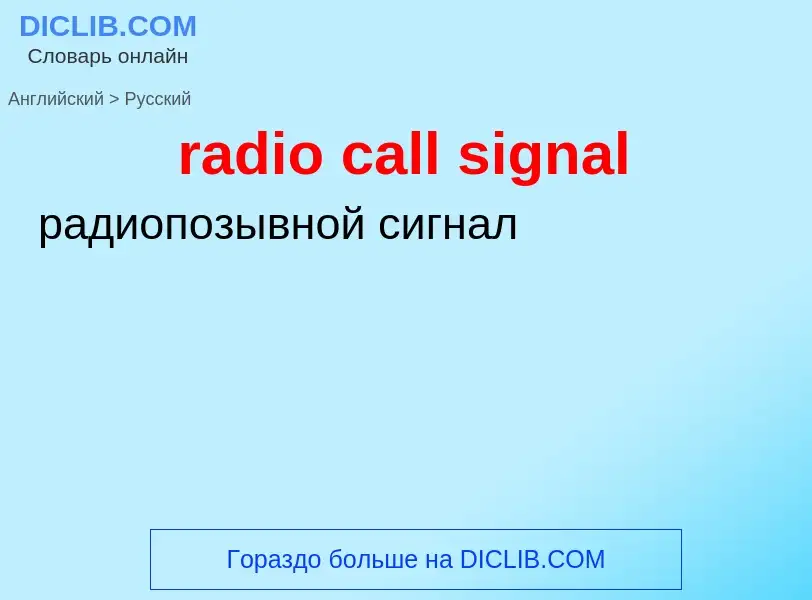Перевод и анализ слов искусственным интеллектом ChatGPT
На этой странице Вы можете получить подробный анализ слова или словосочетания, произведенный с помощью лучшей на сегодняшний день технологии искусственного интеллекта:
- как употребляется слово
- частота употребления
- используется оно чаще в устной или письменной речи
- варианты перевода слова
- примеры употребления (несколько фраз с переводом)
- этимология
radio call signal - перевод на русский
['kɔ:lletə]
специальный термин
позывной
сигнал по коду
существительное
общая лексика
позывной
['kɔ:lletəz]
специальный термин
буквы алфавита
иногда цифры
служащие для опознания радио- или телевизионной станции
Определение
Википедия

A time signal is a visible, audible, mechanical, or electronic signal used as a reference to determine the time of day.
Church bells or voices announcing hours of prayer gave way to automatically operated chimes on public clocks; however, audible signals (even signal guns) have limited range. Busy seaports used a visual signal, the dropping of a ball, to allow mariners to check the chronometers used for navigation. The advent of electrical telegraphs allowed widespread and precise distribution of time signals from central observatories. Railways were among the first customers for time signals, which allowed synchronization of their operations over wide geographic areas. Dedicated radio time signal stations transmit a signal that allows automatic synchronization of clocks, and commercial broadcasters still include time signals in their programming.
Today, global navigation satellite systems (GNSS) radio signals are used to precisely distribute time signals over much of the world. There are many commercially available radio controlled clocks available to accurately indicate the local time, both for business and residential use. Computers often set their time from an Internet atomic clock source. Where this is not available, a locally connected GNSS receiver can precisely set the time using one of several software applications.


![LF]] [[Radio clock]] LF]] [[Radio clock]]](https://commons.wikimedia.org/wiki/Special:FilePath/Atomic clock.jpg?width=200)
![LF]] [[radio clock]] receiver, antenna left, receiver right. LF]] [[radio clock]] receiver, antenna left, receiver right.](https://commons.wikimedia.org/wiki/Special:FilePath/Low cost DCF77 receiver.jpg?width=200)
![The [[time ball]] on the roof of [[Greenwich Observatory]], London The [[time ball]] on the roof of [[Greenwich Observatory]], London](https://commons.wikimedia.org/wiki/Special:FilePath/Royal observatory greenwich.jpg?width=200)


![WWV]], indicating its early location in the U.S. state of [[Maryland]] WWV]], indicating its early location in the U.S. state of [[Maryland]]](https://commons.wikimedia.org/wiki/Special:FilePath/QSL card sent to listener confirming reception of WWV from Maryland - 194007.jpg?width=200)
